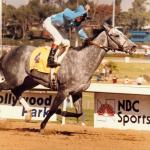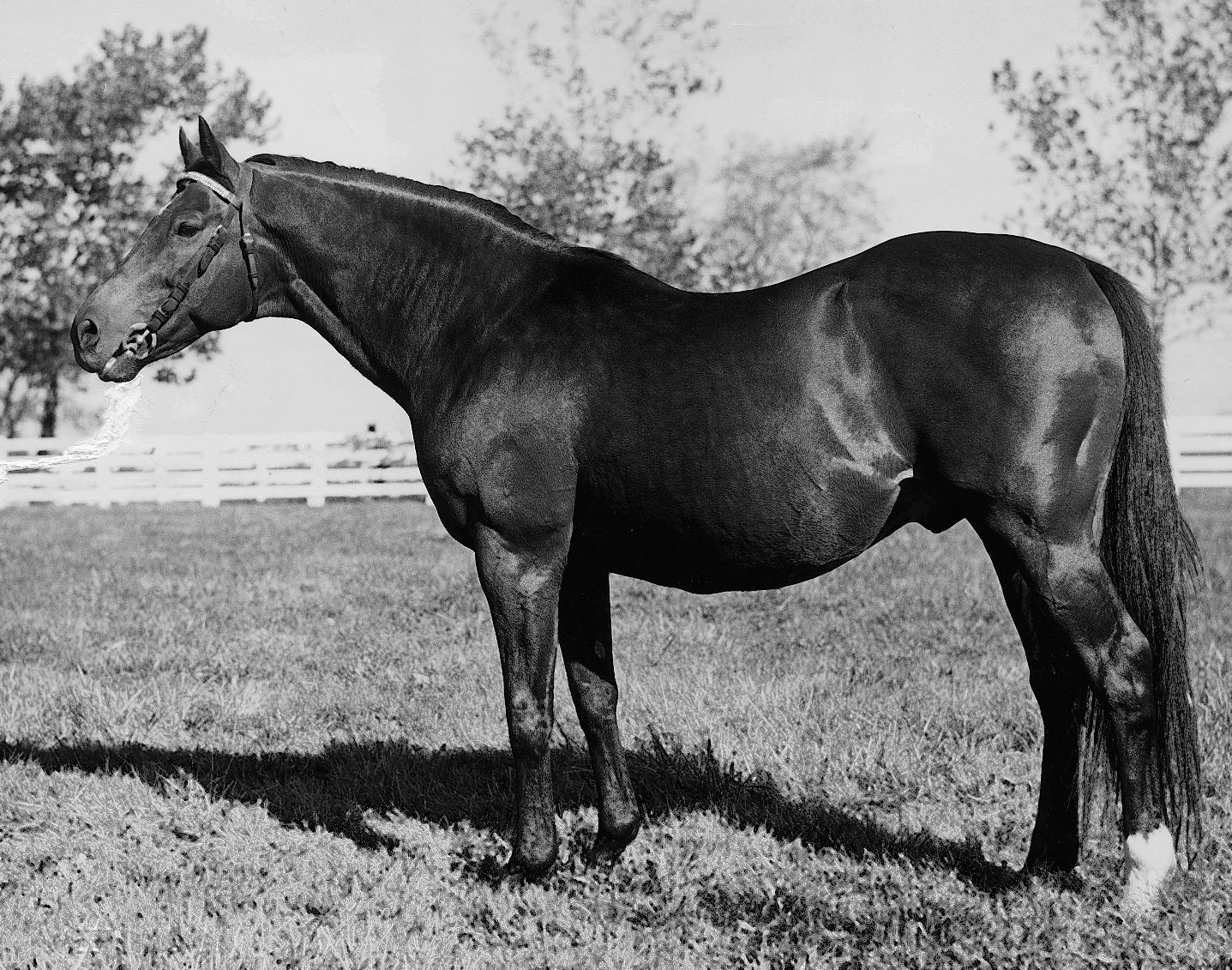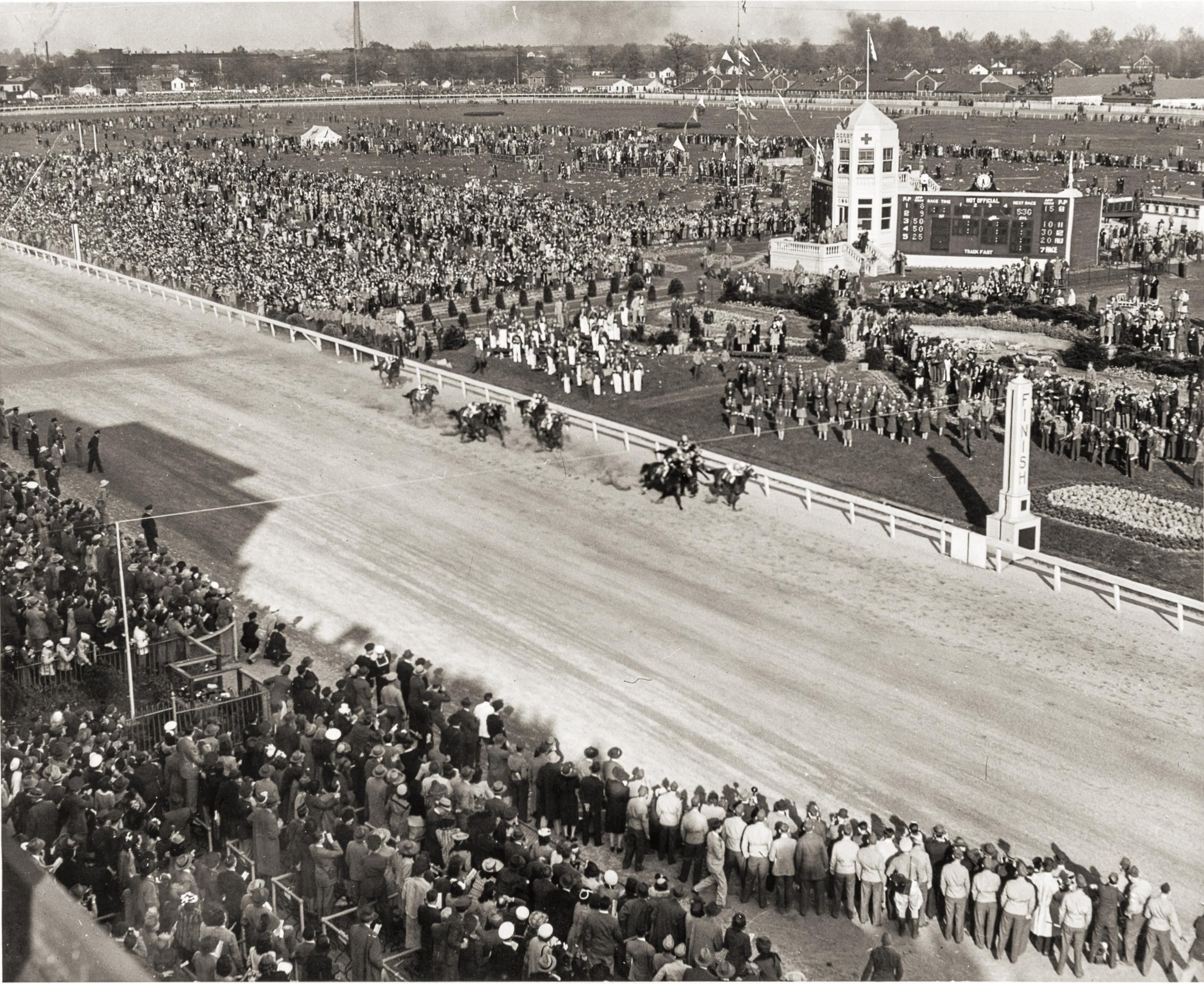
Golden Tempo Goes Last-to-First to Capture Lecomte Stakes at Fair Grounds

For more than eight decades, The Jockey Club has compiled and published a list of theoretical weight assignments ranking the best and most promising 2-year-olds of the previous year. Over the course of those eight decades, a handful of horses have been assigned a higher than normal rating to signify their superiority over their rivals, but no horse has ever matched the extraordinary standard set by Count Fleet in 1942.
Handicapper John B. Campbell gave the young superstar a rating of 132 pounds, and as William H. P. Robertson wrote in “The History of Thoroughbred Racing in America,” Campbell “was right, to the ounce, or, if anything, a little light.”
At first, it would have been hard to predict how high Count Fleet would eventually rise. Though his pedigree was respectable – his sire, Reigh Count, had captured the 1928 Kentucky Derby, and his dam, Quickly, was a durable runner that won 32 of her 85 starts – Count Fleet was not exactly the easiest horse to work with. In fact, his owners, Mr. and Mrs. John D. Hertz, repeatedly try to sell the colt, even after he began his career with a pair of runner-up efforts in New York.
But there was one person who believed in Count Fleet, and that was his jockey, Johnny Longden. As described in “The Most Glorious Crown: The Story of America’s Triple Crown Thoroughbreds from Sir Barton to Affirmed,” by Marvin Drager, Longden was confident that Count Fleet had the potential to be something special, and in a fortunate turn of events, he convinced Mr. and Mrs. Hertz to keep the colt.
Suffice to say, Longden’s high opinion of Count Fleet would prove correct. Under the care of trainer Don Cameron, Count Fleet raced hard and often as a juvenile, making 15 starts in less than 5 ½ months. Though he won his fair share of the early sprint races, it was later in the year – when the distances increased and Count Fleet could stretch his strides over a mile or farther – that the son of Reigh Count truly excelled.

Count Fleet’s final sprint test came in the prestigious Futurity Stakes on Oct. 3 at Belmont Park, where he ran third behind the easy winner Occupation and the filly Askmenow. But there were extenuating circumstances surrounding his defeat; shortly before the race Count Fleet blazed through a routine morning workout in an incredible 1:08 1/5 seconds for three-quarters of a mile, an unofficial record time that possibly left him short of his best for the Futurity itself.
In any case, when Count Fleet stretched out to a mile in the Champagne Stakes one week later, he absolutely blew the field away. Reaching the early lead for the first time in his life, Count Fleet casually extended his advantage throughout the race, going from two lengths to three lengths and finally to six lengths in front by the time he crossed the finish line in the sensational time of 1:34 4/5, a new track record and the fastest mile ever recorded by a 2-year-old.
Was it a fluke? Certainly not. Ten days later he won an allowance race at Jamaica with similar ease, and at the end of October he faced Occupation in the Pimlico Futurity, a rematch that would determine the 2-year-old championship. Once again, their showdown was no contest, but this time it was Count Fleet who cruised to an easy five-length victory. For good measure, Count Fleet ended his season with a stunning 30-length romp against three rivals in Pimlico’s Walden Stakes.
With a season like that under his belt, Count Fleet’s 132-pound rating was understandable, but living up to that standard would require a 3-year-old season of epic proportions. Despite facing adversity ranging from muddy tracks to multiple injury scares, Count Fleet proved up to the challenge, ensuring that his name would never be forgotten.
Two prep races were deemed sufficient to prepare Count Fleet for the 1943 Kentucky Derby, and he won the first one – an allowance race on April 13 at Jamaica – by an easy 3 ½ lengths over a sloppy track, his first start over such a surface. Four days later, he flew to a decisive triumph in the Wood Memorial over the same track, establishing a clear lead early on and maintaining it to the wire.
But though the victory was without drama, the aftermath was not. Count Fleet emerged from the race with a significant cut on one of his hind legs, an injury that threatened his participation in the Derby. Fortunately, Count Fleet recovered in time to compete, and though he was stretching out in distance and facing nine talented rivals, he won in gate-to-wire fashion by three lengths and was never seriously challenged.

Thus began five weeks of domination quite unlike anything seen before or since. In 1943, the Preakness Stakes was run one week after the Kentucky Derby, but the short turnaround didn’t bother Count Fleet – in fact, he seemed to thrive on the challenge and won by eight lengths. With four weeks to wait until the Belmont Stakes, Count Fleet couldn’t sit idle and risk losing his form, so two weeks after the Preakness he contested the one-mile Withers Stakes on a muddy track at Belmont Park. Favored at the legal minimum odds of 1-20, he won by five lengths.
Such was Count Fleet’s domination over his age group that just two overmatched rivals showed up to face him in the Belmont Stakes, a race that would come to define Count Fleet’s greatness. As described by Sid Feder in an Associated Press recap story published in the June 6 edition of the Tallahassee Democrat, “From end to end, any resemblance between yesterday’s Belmont and a horse race was purely coincidental. When the gate opened, jockey Johnny Longden sent the Count charging right out and away from the others, and all the way ‘round he lengthened his edge with each stride.”
Count Fleet’s margin of victory was a staggering 25 lengths, and his time of 2:28 1/5 was a new stakes record. Unfortunately, the colt emerged from the race with an ankle injury, and though extended efforts were made to return Count Fleet to the races, he was eventually retired without ever running again.
Thus, Count Fleet retired with a reputation as an undisputed superstar, “great” in every sense of the word, but with an abbreviated record that left fans and horsemen wondering just how fast he might have been. It’s impossible to say what Count Fleet might have accomplished had he stayed sound, but a story from Longden, recounted in “The History of Thoroughbred Racing in America,” gives us a hint:
“The only jockey to ride the Hertz colt in a race, Longden also exercised him at times, and he later stated that once, just once, he turned the brown flash loose for an instant, to satisfy his curiosity concerning how fast Count Fleet really was—but he felt such a surge of power that he took him in hand again almost immediately, fearful of the consequences.”
Certainly his rivals – which were fewer and fewer every time he ran – could relate to being fearful of the great Count Fleet.
Note: This story was originally published in February 2018 and has been updated.
Fun Facts